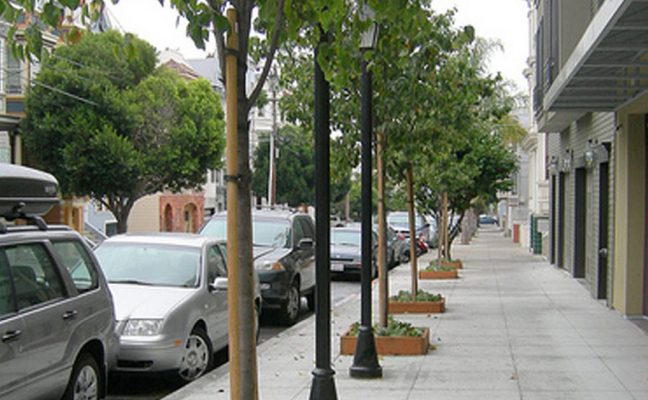In the late 1940s, Friedel Klussmann managed to win the support of the mayor and board of supervisors for a drive to plant trees on city streets, and even helped raise approximately $40,000 for the initiative. Public interest failed to take off, however, and the idea was abandoned.
At the time, San Francisco had long possessed a reputation as a “treeless city,” particularly in its downtown area; a decade later, the Soviet premier Nikita Khrushchev would famously remark that although San Francisco was “a very beautiful city […] I would prefer more trees.” Though the Board of Supervisors finally established a tree planting program in 1955, a 1959 survey by the Department of Public Works estimated that there were only 40,000 trees on city streets, of which only 5,000 were publicly maintained. Financial responsibility for planting and upkeep also remained largely with businesses and residents.
San Francisco Beautiful’s first initiative in 1961 was a partnership with churches, schools, businesses, and neighborhood associations called “Plant-a-Tree Week” (the event would remain a regular staple of its efforts through the mid-1970s).
Spurred on by its initial success, the organization undertook a year-round tree-planting campaign; in 1962 alone, San Francisco Beautiful planted almost two-thirds of the 3000 new trees planted in San Francisco, and by the end of that year the Chamber of Commerce could boast of 25,000 newly planted trees since 1959.
This campaign spawned new projects: civic demand grew to the point that local nurseries began to report a shortage of adequate specimens. In 1963, San Francisco Beautiful established a “tree bank” for the city to keep up with the increase in demand, and in 1964 created a “gift tree fund” to celebrate or remember worthy citizens or groups with a tree planted in their honor.
In 1967, San Francisco Beautiful inaugurated a Demonstration Street Tree Exhibit on Funston Avenue along Park Presidio, and in 1969 it began a program with local schools to provide matching funds for students raising money to beautify their campuses and playgrounds. By the end of its first decade, the organization could claim it had planted 75,000 trees citywide.

